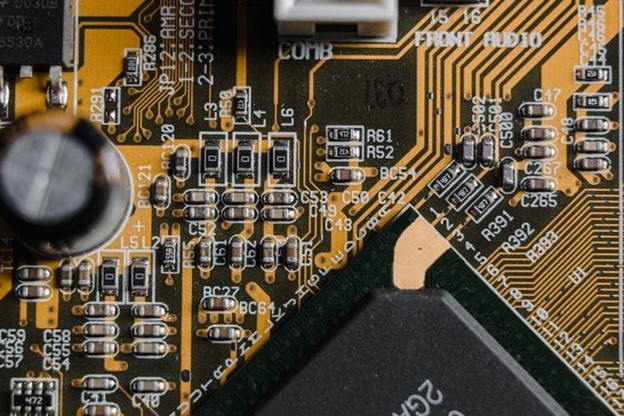Printed circuit boards (PCBs) serve as the backbone of modern electronic devices, connecting various components and ensuring their seamless operation. To optimize the performance and reliability of PCBs, engineers employ various design techniques. One such technique, often used in high-frequency and high-speed applications, is copper thieving.
Let’s explore what copper thieving is, why it’s important and how it significantly impacts the functionality of electronic devices.
Understanding Copper Thieving
Copper thieving is a process used in PCB design where we strategically add additional copper material to specific areas of a board, usually in the empty spaces or large ground planes. This technique involves creating a grid or array of small copper pads, known as thieving pads, distributed across the PCB. These pads serve to balance the copper density, ensuring uniform etching during the manufacturing process.
Why Use Copper Thieving?
There are several reasons why a PCB manufacturer will use copper thieving. One such example is to avoid uneven etching. During the etching process, the copper material is removed chemically to create circuit traces. However, if the copper distribution is uneven, it can lead to over-etching in some areas, affecting the integrity of the traces. Copper thieving helps maintain uniform copper density, preventing over-etching and ensuring precise circuit features.
Uneven copper distribution can also cause the PCB to warp or distort during manufacturing, especially in large ground planes. By adding copper thieving, we maintain thermal balance and reduce the risk of warping. This is especially important in multilayer printed circuit boards where temperature variations can impact the overall board flatness.
Copper thieving also helps reduce electromagnetic interference (EMI) by providing a stable ground reference. By maintaining a consistent ground plane, the risk of signal degradation due to interference is minimized, ensuring reliable data transmission. Finally, copper thieving aids in distributing heat evenly across the PCB, preventing localized hotspots and maintaining proper thermal management.
Best Practices for Implementing Copper Thieving
Sonic is a trusted PCB manufacturer and we follow best practices for copper thieving. This includes strategic placement, which places thieving pads in areas with large ground planes or empty spaces to balance the copper density.
Not only do we determine optimal placement, but also, we make sure that the thieving pattern matches the specific frequency requirements. Doing so ensures optimal signal integrity and minimal electromagnetic interference. We especially recommend copper thieving for printed circuit boards in high-frequency and high-speed applications.
To learn more about this sophisticated PCB design technique and how it can improve the reliability and performance of your electronic devices, contact Sonic Manufacturing today.

